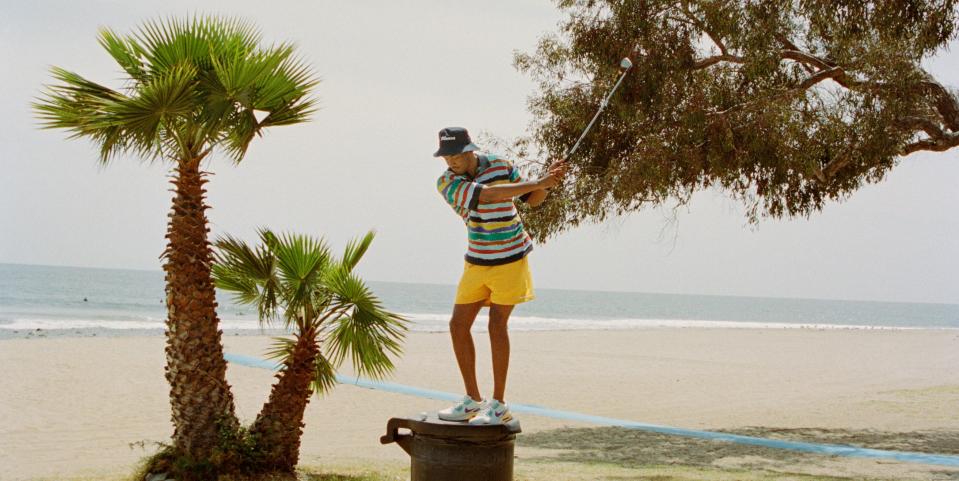Welcome to the Golfaissance

There have been plenty of reasons to abandon golf. The lofty standards and arcane etiquette. The frumpy snob on the first tee box, cell phone clipped to his belt under an offensively patterned polo shirt—an obnoxious sign that the electricity Tiger Woods brought to the game was all but gone. A few years ago, the headlines began rolling in: American golf was dying a slow death. Fewer people were taking up the sport. Equipment sales and TV ratings were way down. The pro circuit lacked star power. Country clubs faced an existential crisis.
But this isn’t an obituary. While the critics wrote their eulogies, a new generation of golfers emerged. Younger and more diverse. Postcollegiate bros traded backyard bashes for 6:00 a.m. tee times. Golf meme accounts took over Instagram. The fashion evolved. Nike added spikes to the Air Jordan I, V, and XI. The apparel adopted a streetwear sensibility. (See: the introduction of the golf hoodie.) Suddenly, Mister Belt Clip had company.
And that was before the pandemic. Around the time social distancing became a thing, when we were growing exhausted by focaccia and FaceTime, Americans got out their clubs and teed up in a surge not seen since 1997, when Woods first appeared on the scene, according to the National Golf Foundation. It makes sense: In a year filled with sameness and solitude, golf has offered an escape from both. Stand on a dewy fairway just after sunrise. Watch the fog rise above the tree line; put your phone and your mind on silent. The only agenda is getting the ball in the air. You feel liberated.
Today, we’re in the middle of a golfaissance.
Even better: Amid the largest social-justice movement in this century, progressive golf fans—we exist!—are reexamining our relationship with the sport. We recognize that golf has no future if it is to lean on the wealthy, white privilege on which it was built; the only way forward is through accessibility, hospitality, and investment that benefits disenfranchised communities. Without such change, the sport doesn’t stand a chance. But if the gatekeepers—the PGA, the private clubs, the USGA—take action, golf will have the opportunity to thrive.
Those who never fell out of love with the game in the first place, who know its potential and have hoped for its survival, have an opportunity, too: to revel in this moment; to proselytize golf’s evolution to whoever will listen; to help ensure those obits, and not the sport, turn to dust. Golf is finally cool again. Wouldn’t it be nice if, this time, it lasted?
This article appears in the Summer 2021 issue of Esquire. Get an annual subscription by joining Esquire Select here.
You Might Also Like

